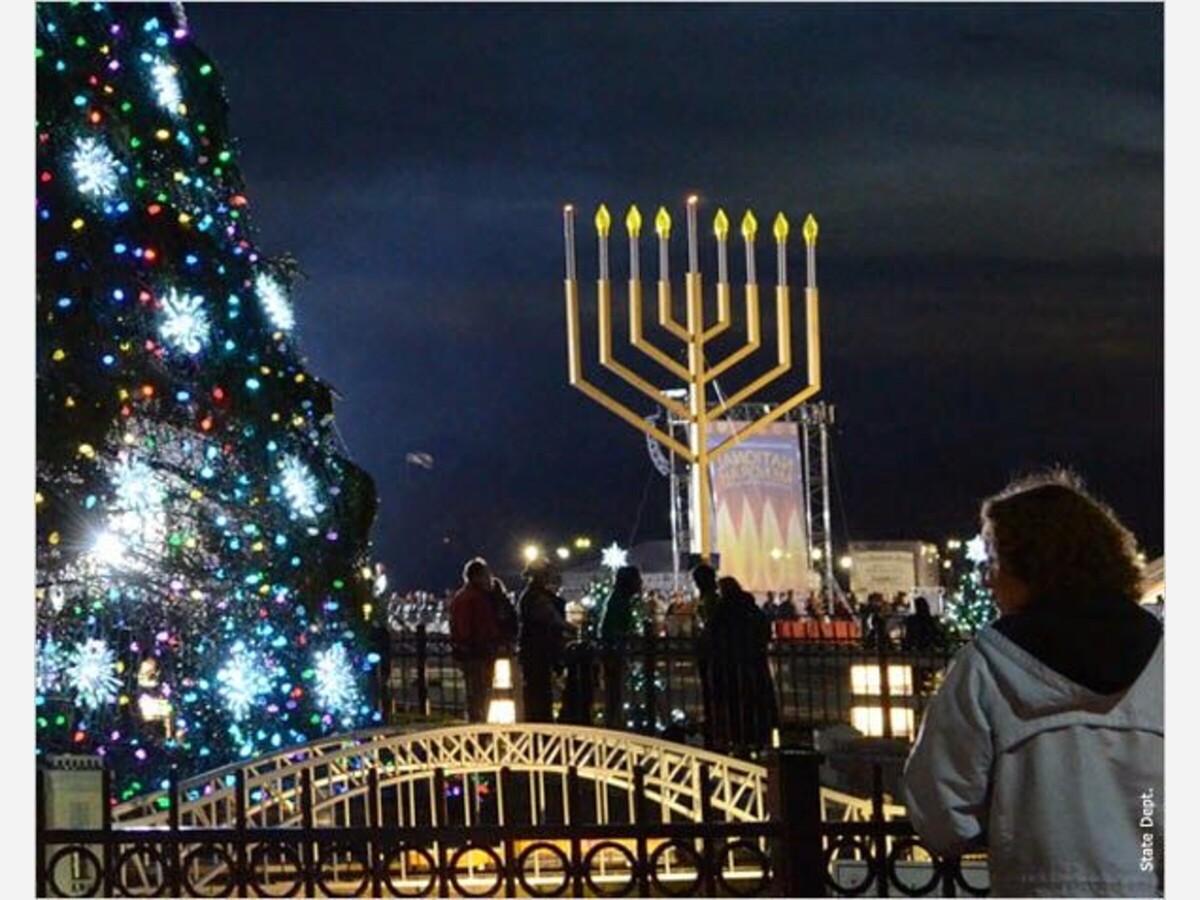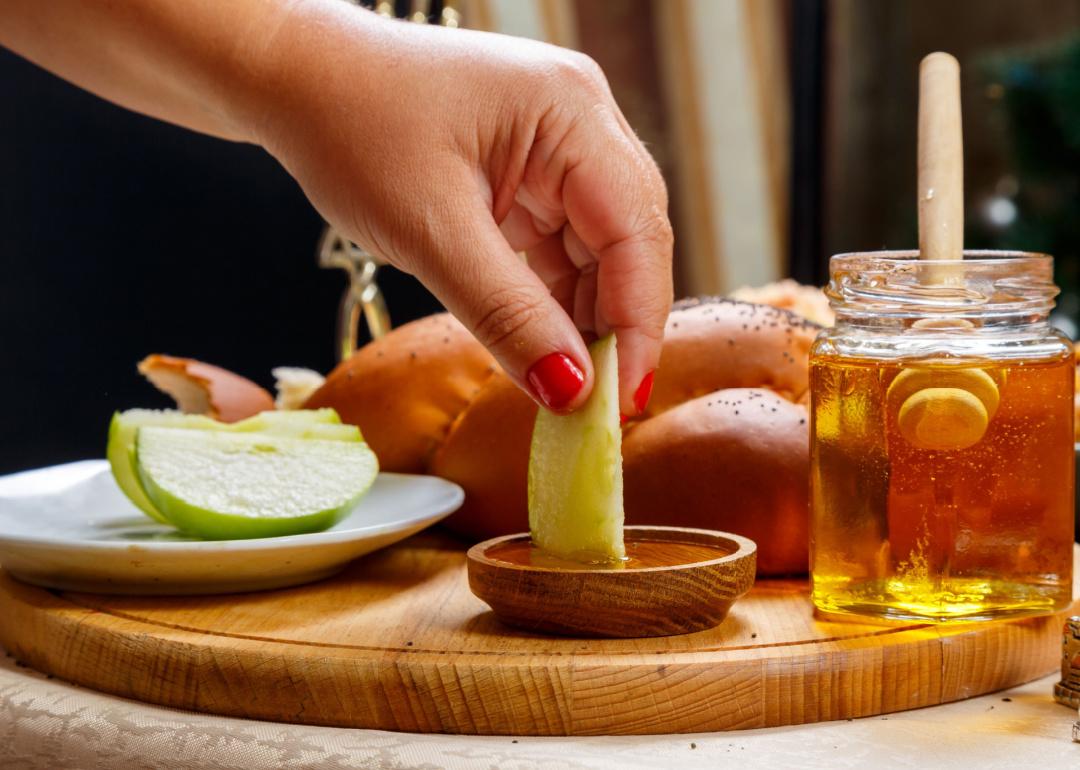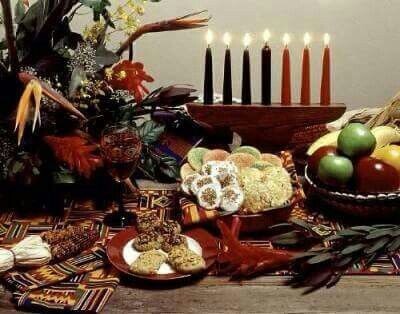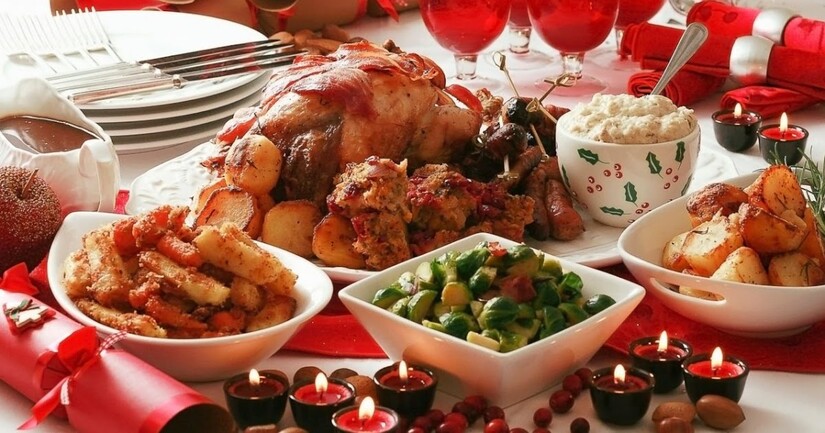Image


In Alamogordo and around the world December is the host of three major holidays that overlap, and all have a celebration of light with food and family as a major component. The 3 most celebrated cultural and religious holidays are Hanukkah, Christmas, and Kwanzaa. This year, Hanukkah begins on December 18th and lasts until December 26th, Christmas of course falls on December 25, and Kwanzaa begins December 26 and lasts through January 1. Within American Culture there is a lot of overlap between these holidays; families in which one parent is Jewish and one is Christian may celebrate both Hanukkah and Christmas, and African American families may celebrate both Kwanzaa and Christmas. Though Christmas is the dominate holiday in driving retail sales, garnering celebrations and public activities, each have similarities, and each have distinct differences.
Hanukkah is an eight-day festival of lights, the dates for which shift slightly every year since the Hebrew calendar and the Gregorian calendar do not exactly align. Hanukkah begins on December 18th this year. Thousands of years ago, a Syrian king wanted all of the Jews who were a part of his kingdom to drop their Jewish culture and follow Greek customs. As you might imagine, the Jews didn’t want to adopt Greek culture and decided to fight back against the Syrian king in defense of their religion and culture. During the rebellion, a Jewish temple was ransacked, and the supply of oil contained within was destroyed, but the Jews won the rebellion and celebrated their victory for eight days. When they returned to the ransacked temple, they found one small jar of oil, which surprisingly burned for eight days. Hanukkah is an eight-day celebration because of the Jewish victory and the miracle of the oil.
Thus, the light: Each day of Hanukkah, one additional candle in a menorah is lit, starting with one candle on the first day, and ending with all eight candles lit on the last day.
Because Hanukkah is a miracle of oil, traditional Hanukkah foods include potato latkes (fried in oil), doughnuts, and other oily foods. Beef brisket often takes the place of the main course. Families often play a game with a dreidel (spinning toy that has a Hebrew character written on each side) and chocolate coins, which are a traditional holiday gift. While Hanukkah was not originally a holiday that required intense gift giving à la Christmas, families now may elect to give one gift (aside from chocolate coins) for each night of the celebration influenced by the North American traditions of Christmas.
Christmas is celebrated each year on December 25 with gift giving, songs, and, traditionally, a turkey or ham for dinner. Festivities leading up to Christmas involve tree decorating, secret Santa, and cookie baking. While originally a Christian holiday, Christmas is now celebrated by over 90% of Americans, according to a recent survey. This includes over 80% of the people in the United States who don’t identify as Christian. It is now a holiday for the masses and has become quite the commercial phenomenon, with Christmas-specific sales beginning as early as Thanksgiving each year. But Christmas wasn’t always focused on pine trees, a green man whose heart grew three sizes, or Rudolph the Red-Nosed Reindeer, and it still isn’t completely. 62% of Americans attend a church service on Christmas Eve or Christmas Day.
The story starts with The Holy Bible. A young Mary was visited by an angel who told her that she had been chosen to be the mother of Jesus. She married a man named Joseph, who was at first confused and upset about Mary’s pregnancy; he too was visited by an angel (in a dream) who assured him that everything would be okay.
Christmas, then, is a celebration of the birth of Jesus and the light of Jesus, who was born to the Virgin Mary in a manger in Bethlehem. He was visited by shepherds; wise men bearing gifts of gold, frankincense, and myrrh; and cared for by Mary and Joseph and were led by the light of the great star above Bethlehem which led them via the light to the baby Jesus.
December 26 marks the first day of Kwanzaa, which also ends on January 1. Kwanzaa (which translates to “fruits first” from Swahili) is a seven-day holiday that is celebrated by African Americans and Africans throughout the world. The holiday encourages the celebration of African heritage, gatherings between family and friends, and the reflection on seven African values (called the Seven Principles, or the Nguza Saba). The Seven Principles are unity, self-determination, collective work and responsibility, cooperative economics, purpose, creativity, and faith and are represented by the light of seven candles in a kinara, or candelabra.
The light of Kawanza is represented via kinara which is filled with three red candles on the left side (these represent the struggle of the people, or self-determination, cooperative economics, and creativity), a black candle in the middle (representing the people, or unity), and three green candles on the left side (to represent the future, or collective work and responsibility, purpose, and faith).
Each of the seven days of Kwanzaa is dedicated to one of the principles, and each day of Kwanzaa, one of the candles is lit, starting with the black candle, and then moving from left to right. On the final day of Kwanzaa, celebrators are encouraged to reflect on who they are, who they want to be, and what it means to be African.
Whatever holiday you choose to celebrate this year, one, all or none, let's all respect one another and the diversity and tolerance for the variety of beliefs and the shared appreciation for the light and foods of this holiday season of Christmas, Hanukkah and Kwanzaa and enjoy all of the home-cooking you can get.
A few select food ideas from each celebration to consider...

Jewish cuisine has long been influential in the U.S. and global food culture. Diaspora brought traditional Jewish foods across the world: Over centuries and continents, Jewish foods became part of the places Jews have migrated, just as diverse and rich regional foodways have shaped the evolution and reinterpretation of Jewish food.
Because Ashkenazi Jews (of the Eastern European diaspora) make up most of the Jewish population in the U.S., many familiar Jewish favorites among American Jews and non-Jews hail from Russia, Poland, Germany, and the rest of Central and Eastern Europe. Less ubiquitous but just as delicious is Sephardi cuisine, which encompasses foods of the Spanish diaspora in North Africa, the Middle East, and the Mediterranean.
Latkes- The iconic Hanukkah food is beloved by Jews and non-Jews alike (as most forms of fried potatoes are). But latkes were not always made using potatoes. After the expulsion of Jews from Sicily in the late 1400s, their traditional fried ricotta pancakes spread to northern Italy. It was only in Eastern Europe in the mid-1800s, after a surplus crop of potatoes, that potato latkes became the fritter of choice for Ashkenazi Jews. Whether grating the potatoes and onions by hand or using a food processor to cut down on prep time, these latkes fit the bill when topped with applesauce, sour cream, or lox.
Matzo Ball Soup -A staple at the Passover table and your local diner alike, matzo ball soup is easy to make using matzo ball mix and a few pantry ingredients, but is greatly improved by making a comforting, from-scratch chicken soup or your favorite hearty vegetable stock. Originally made from the leftover crumbs of matzo, Central and Eastern European Jews made "knoedel." In the 1930s, Manischewitz began selling matzo ball mix in the U.S., reportedly under the name "Alsatian feathery balls."
Challah- There are few things more enjoyable than a warm, freshly baked challah. Usually intricately braided with a shiny browned outside, challah is a soft and fluffy egg-based bread, mildly sweet from honey or sugar, that is typically served on Shabbat or with other holiday meals. Try this challah smeared with butter and drizzled with honey, made into french toast, or used as a sponge for brisket.
Hamantaschen are triangular cookies traditionally made on Purim, and are usually filled with preserves, poppyseeds, prunes or dates, or even chocolate spread. The shape of the cookie is, like many Jewish foods, symbolic in nature. Most people believe that the triangle mimics the shape of the hat worn by Haman, the villain of the Purim story. They can be made dairy-free, although some prefer swapping out the vegetable oil with butter for a richer dough. The cookies are formed by cutting out circles of dough, placing a dollop of your preferred filling in the center, and folding over three sides to form the quintessential three-cornered shape.

Kwanzaa began in the United States but is now celebrated in many countries, primarily those with African descendants. The holiday was created to celebrate African American culture and is traditionally celebrated with foods from many parts of the world.
Kwanzaa’s traditional foods are usually made to reflect the colors of the Pan-African flag or Bendera. The Bendera is red, black, and green. The two most significant foods on the table at Kwanzaa are black-eyed peas and collard greens symbolizing good luck and good fortune.
Not only is this holiday rich in tradition, but the food often served is rich in various nutrients—making for a well-balanced spread. Given these foods are less exotic to the American palate our descriptions are less ambitious.
Christmas Foods

Christmas dinner is a time for family, fun and, most importantly, food. But if you've served the same meal year after year after year, it can start to get a little old. Bring some excitement into your festivities this season with an alternative Christmas dinner menu. Links to these alternative recipes are included below...
Everyone loves tacos, and Christmas tacos put a delicious seasonal spin on the meal. It all starts by cooking short ribs in a slow cooker along with pomegranate juice, chiles, and cinnamon for an intriguing flavor. You'll then use fresh pomegranate to make a lively pico. When everything's ready, build the tacos in corn tortillas and offer cilantro, lime, cotija cheese, and crema as toppings.
If your family loves maple sugar-glazed baby carrots, take this Christmas to the next level with these honey glazed Moroccan carrots. Serve with labneh yogurt dip and crumbled feta cheese for an authentic experience!
This shrimp and crawfish jambalaya can feed any number of guests and gives the holidays a New Orleans twist! Use smoked paprika to season this dish and you have an instant Christmas hit.
For an unbelievably easy and off-the-beaten-path main dish, check out this sheet pan chicken, sweet potato, and broccoli roast. Skip the hours-long production of cooking a ham or roast beef and use this easy recipe for a stress-free holiday.